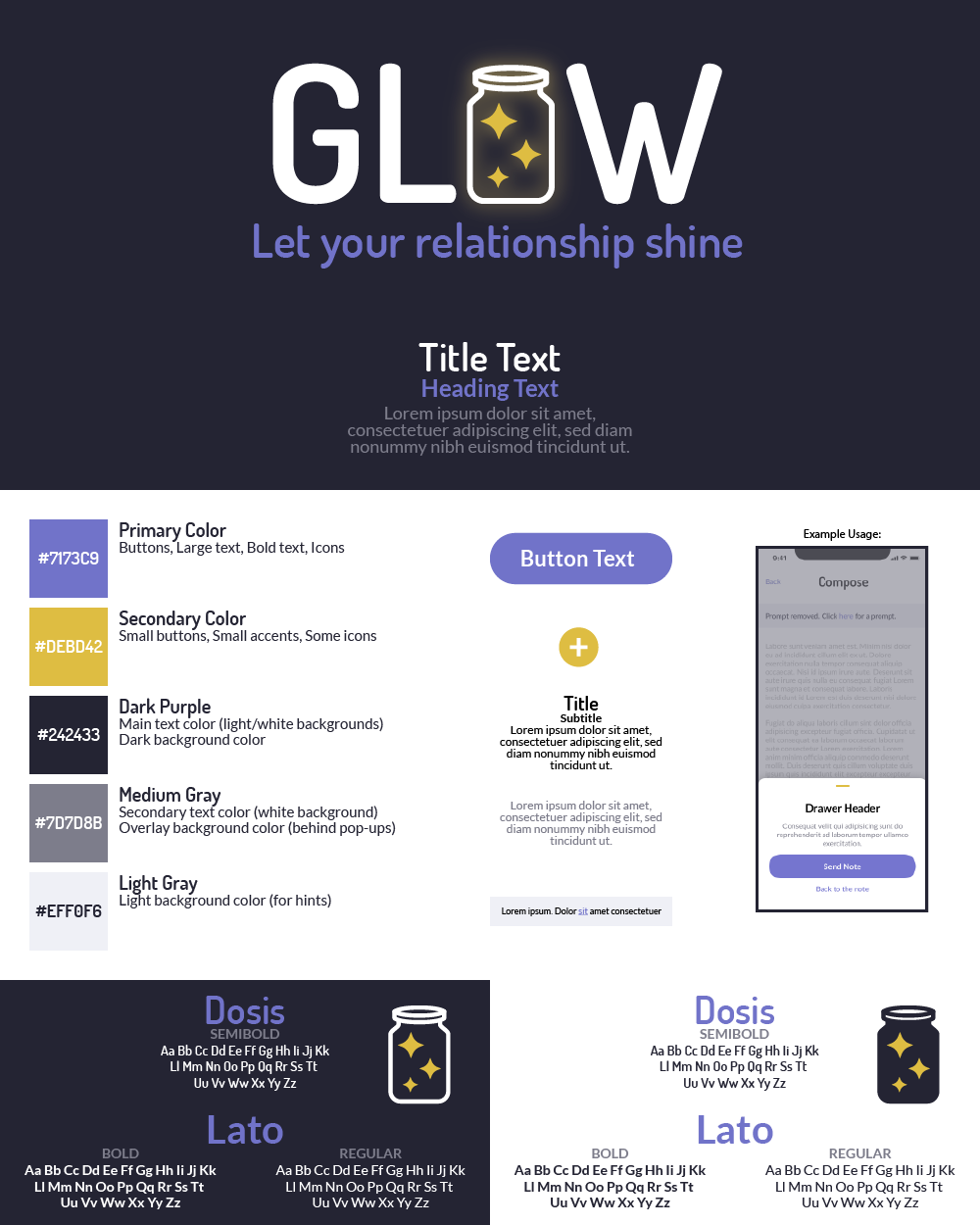06 Ideation
Design Requirements
Functional Requirements
1. Users can send asynchronous messages. Since couples in LDDR are not physically together, it is often difficult for them to be aware of each other’s availability and therefore communicate synchronously. Our interviewees deemed asynchronous communication as critical to the success of relationships, though current platforms are often flawed in many ways.
2. Users can save memories to view at a later time. Enabling users to save memories such as conversations and photos taken with their partners is important because it provides an opportunity for users to engage in relational savoring (i.e. reminiscing on past joint-experiences). The solution will store and aggregate cues that users rely on to retrieve past memories, thus providing a potential remedy for the challenges LDDR couples may experience, improve their moods, and strengthen the relationship.
3. Couples’ interactions and messages are private. Since our overarching goal is to help couples in LDDRs stay connected, we want to ensure that the solution creates a space that is dedicated to only the members of the couple.
Non-Functional Requirements
1. The solution is low-cost to the user. It is important for the solution to be of low cost to potential users because our product is catered to college students who typically do not have significant discretionary income. Furthermore, we identified through our competitive analysis that similar products in the market are also typically low-cost or free.
2. The solution should make users feel safe. Given the personal and intimate nature of the content that LDDR couples will exchange on the product, we believe that the product should convey a sense of safety and security to our users at all times. Users should know that their private messages will always stay private.
3. The solution will adhere to the principle of availability. It is unlikely that both partners in a couple will use the same hardware, software, or operating systems. Therefore, by ensuring our solution is a cross-platform product, we could potentially reach and benefit a larger segment of our target user group.
4. The solution will be accessible and meet WCAG 2.1 AA accessibility requirements. Relationships transcend physical and cognitive constraints, and therefore our solution, which is intended to promote a sense of connectedness between users, should not itself become a hindrance in this process.
5. The solution will be performant. We think any messaging product should be comparable to the performance of SMS texting since the product will be in direct competition with this universal form of asynchronous communication. This will help our solution stay competitive in the market.
Design Brainstorming & Sketching
While reviewing our affinity map and design requirements, our design ideas immediately began to flow. We encouraged each other to push the boundaries of our ideas and not rule anything out. In total, we brainstormed 10 divergent design concepts ranging from smartphone apps to virtual & augmented reality environments. From there, we analyzed our ideas in terms of relevancy, technological hurdles, and cohesion with our goals & requirements to narrow down our concepts to two designs, Milestone Markers and Augmented Reality Postcards.
Design 1: Milestone Markers
Our first design idea was for an app to help long distance couples to put a positive spin on their distance by earning tokens to symbolize how long they have maintained their relationship while distanced. At each significant time marker, couples will unlock a new prompt to fill out about the other person, such as a reason they love the other person or a favorite memory. To help the time pass more easily, couples can read through their “journal” - a portion of the app that contains all the answered prompts from their partner as well as a log of important milestones.
Design 2: Augmented Reality Postcards
Our second design idea was for a solution that allows long distance partners to send and receive virtual “postcards” with messages, photos, and/or videos embedded on them. Users could enter the augmented reality viewer of the app and create a “memory wall” in the physical space around them where they could pin postcards they’ve received, along with other photo and video memories.
Storyboarding
Storyboard 1: Milestone Markers
This storyboard below follows a couple sending each other notes through the Milestone Markers smartphone application. A user can open a personalized milestone note sent by their significant other when a milestone in their relationship has been met. The user can then send their significant other a note immediately using the prompt suggested by the application. The significant other will receive the note and a push notification. While this exchange is happening, the app displays how long the couple has been apart and when they will next meet in person. This storyboard captures the functionality of immediate versus scheduled milestone notes and the fact that the application supports synchronous and asynchronous communication.
Storyboard 2: Augmented Reality Postcards
The storyboard depicts an LDDR couple that is looking through a photo roll of photos they have taken together. One of them sees a photo they really enjoy and adds the photo to the Augmented Reality Postcard Wall. The application then shows the postcard appearing on the virtual postcard wall when the user points their device any wall in their home. The partner then receives a notification that a postcard has appeared on the virtual postcard wall. The story shows the asynchronous nature of the application as well as the shared experience of seeing the postcard wall. The postcard wall acts as a shared virtual space.






















































